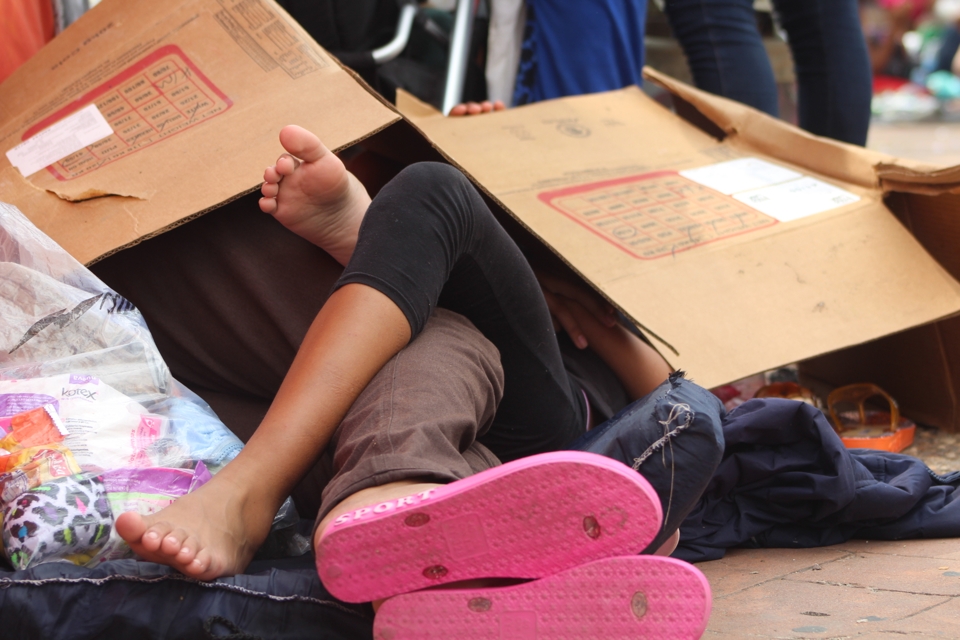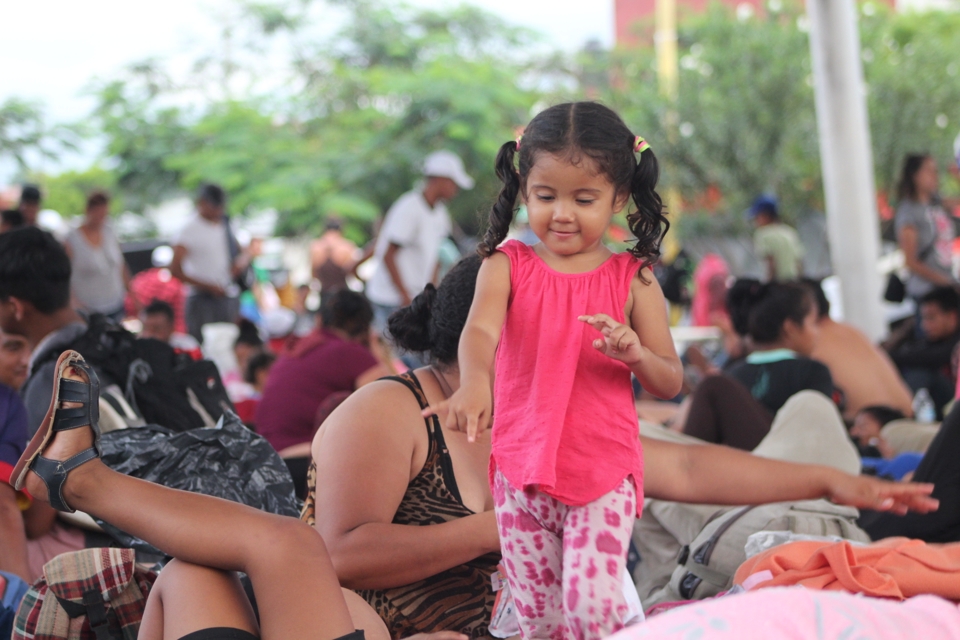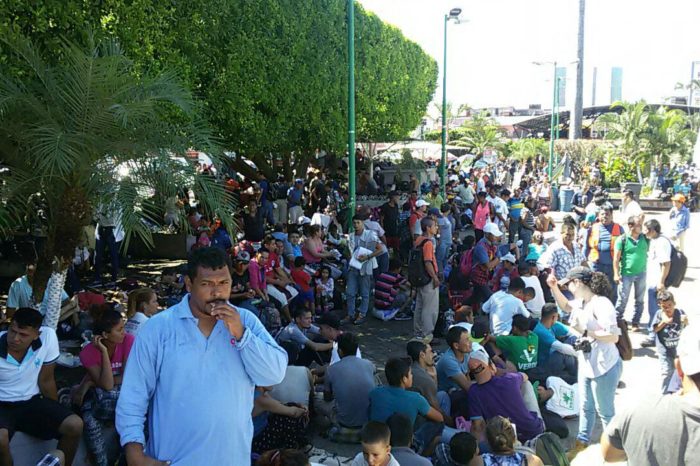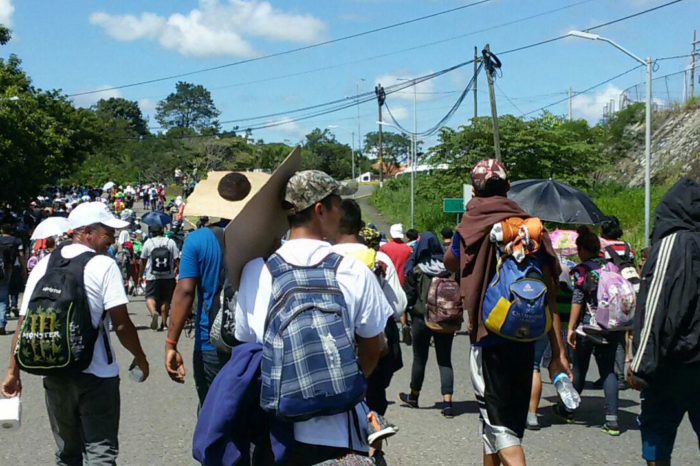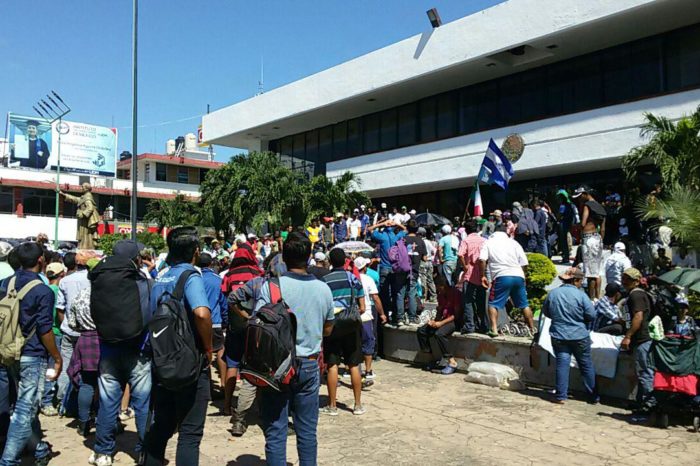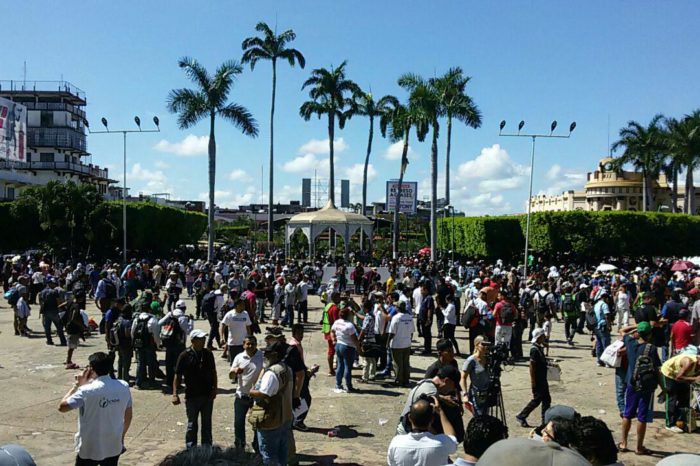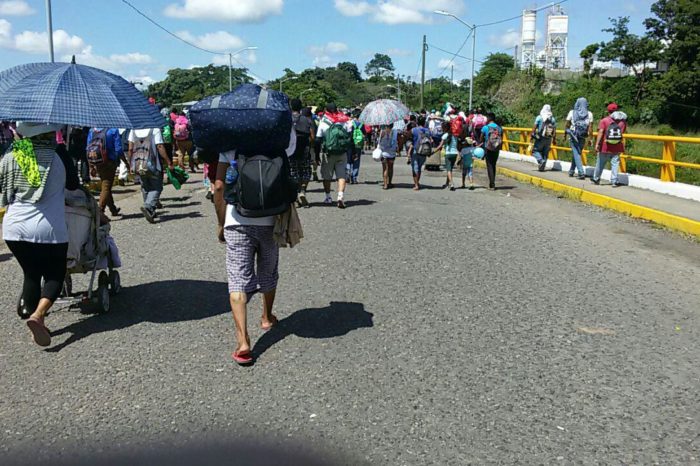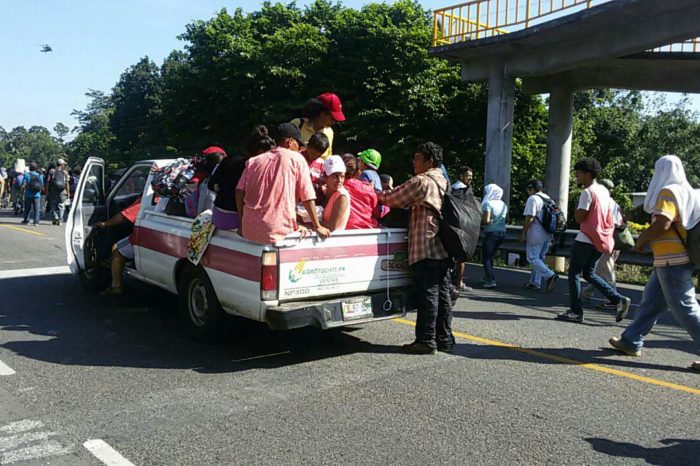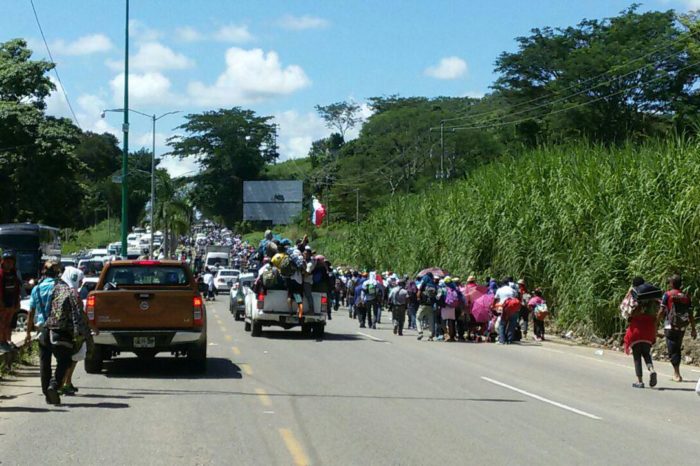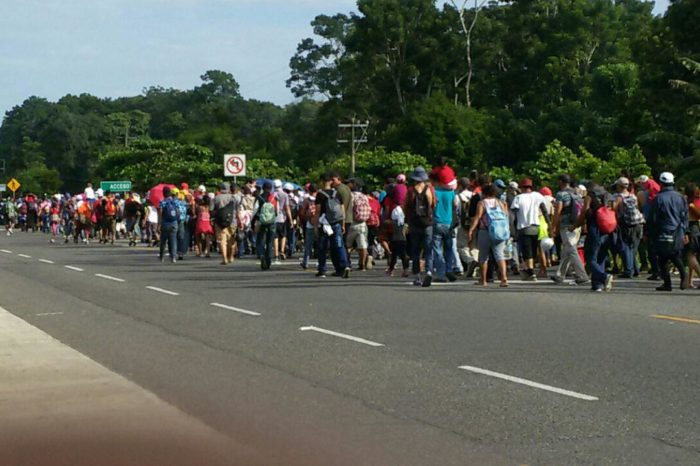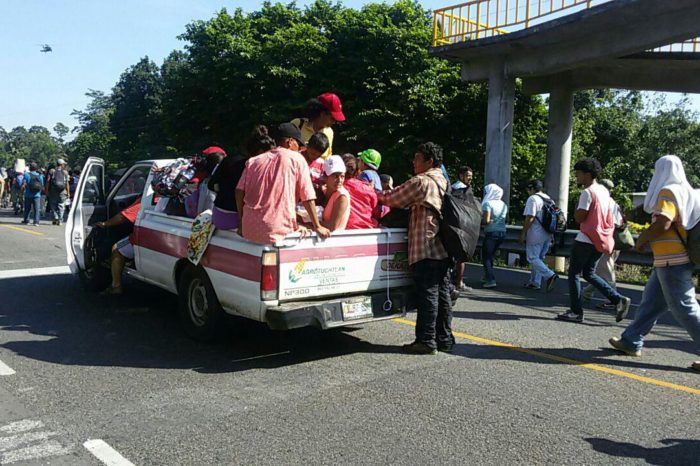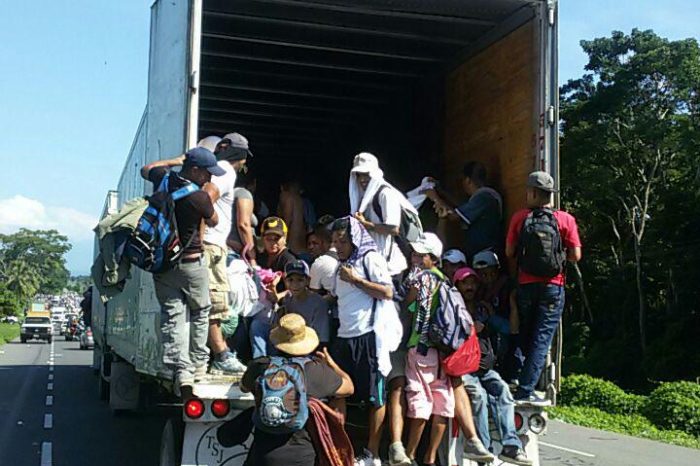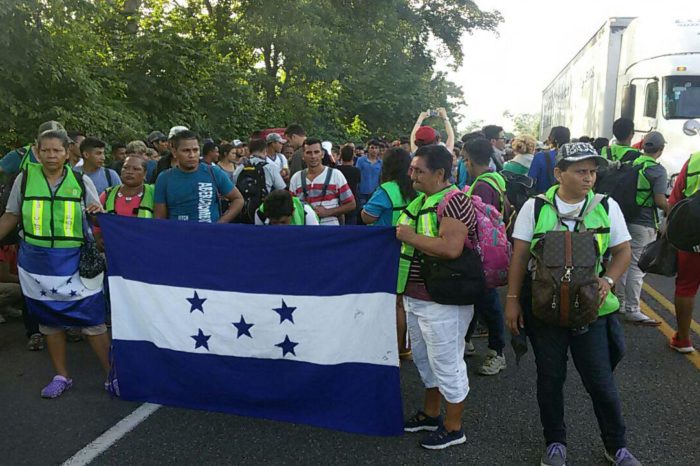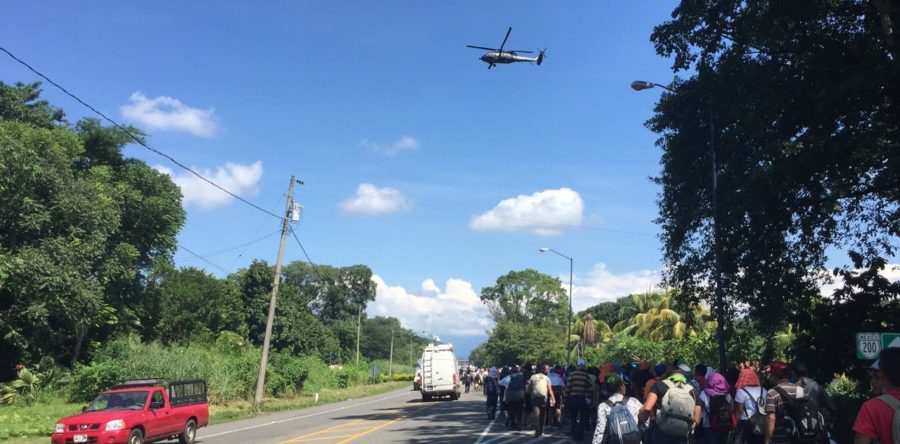
Mexico
(Español) ¿Quién especula sobre el éxodo? Primeras reflexiones al salir de Chiapas
Por Marcela Libera
Fotos: SubVersiones/Avispa Midia
Independientemente de cómo y por qué haya sido organizada la salida de los migrantes el pasado 13 de octubre desde San Pedro Sula en Honduras, es cierto que el proceder de la caravana ha desbordado cualquier previsión y expectativa.
Miles de personas han ido sumándose a lo largo del camino, desde Honduras, Guatemala, El Salvador y México, conscientes de la especial protección que les proporciona caminar todos juntos en el intento de atravesar las fronteras que se interponen entre su lugar de residencia y Estados Unidos. De hecho, así es, ya que ni las autoridades guatemaltecas ni las mexicanas han logrado parar su rápido paso hasta ahora.
Desde la llegada a la orilla del rio Suchiate, que separa físicamente México y Guatemala, hasta la entrada en el estado de Oaxaca, las instituciones federales han adoptado diferentes estrategias de contención y represión, fundamentalmente con el fin de detener y debilitar la gran masa de personas decididas a llegar a la frontera norte de México.
El 27 de octubre, en el km 32 de la carretera federal 200, tramo Arriaga–Juchitán de Zaragoza, 200 efectivos antimotines de la Gendarmería de la Policía Federal bloquearon el paso a la caravana justo en la entrada del estado de Oaxaca. Este despliegue de fuerzas antimotines fue una réplica del realizado en la frontera entre Chiapas y Guatemala y durante el primer día de camino rumbo a Tapachula. En esos primeros momentos en Chiapas, las amenazas de represión física estaban vinculadas al caso de no aceptar las opciones de regularización migratoria ofrecidas por el gobierno mexicano; en Oaxaca, la presión estaba relacionada al plan “Estás en tu casa”, divulgado por el presidente saliente Enrique Peña Nieto el día anterior.
Joint Communique from the CNI, CIG, and EZLN Rejecting the NAIM (New International Airport of Mexico) and Voicing Support for and Solidarity with Migrant Populations
Joint Communique from the CNI, CIG, and EZLN Rejecting the NAIM (New International Airport of Mexico) and Voicing Support for and Solidarity with Migrant Populations
October 26, 2018
To the People of Mexico:
To the People of the World:
To the National and International Sixth:
To the CIG Support Networks:
The peoples, nations, tribes, and barrios of the National Indigenous Congress (CNI) and the Zapatista Army for National Liberation (EZLN) respectfully address the Mexican people and the originary peoples and campesinos who wage dignified resistance against the death-driven megaproject called the New International Airport of Mexico (NAIM). These peoples have sustained hope without giving up, giving in, or selling out, and they are a light for all of us who dream of and work to build justice.
We also respectfully address those who have been forced to seek in other lands what was stolen from them in their own geographies; those who migrate in search of life, as well as those who, without self-interest and in their own ways, times, and means, support those migrants.
-*-
We have seen, lived, and closely followed the struggle of the peoples of the Texcoco Lake and the surrounding areas. We have witnessed their determination, dignity and pain, which have also been ours. We have not forgotten the repression in May 2006 which included sexual torture; the unjust imprisonment of compañeros and compañeras of the Frente de Pueblos en Defensa de la Tierra (People’s Front in Defense of the Land) and of the national and international Sixth; and the murder of our compañero Ollin Alexis Benhumea and 14-year-old Francisco Javier Cortés Santiago. Vicente Fox and Enrique Peña Nieto gave the order for this repression with the full approval of the entire political spectrum from above, including those who today claim to represent “change.”

